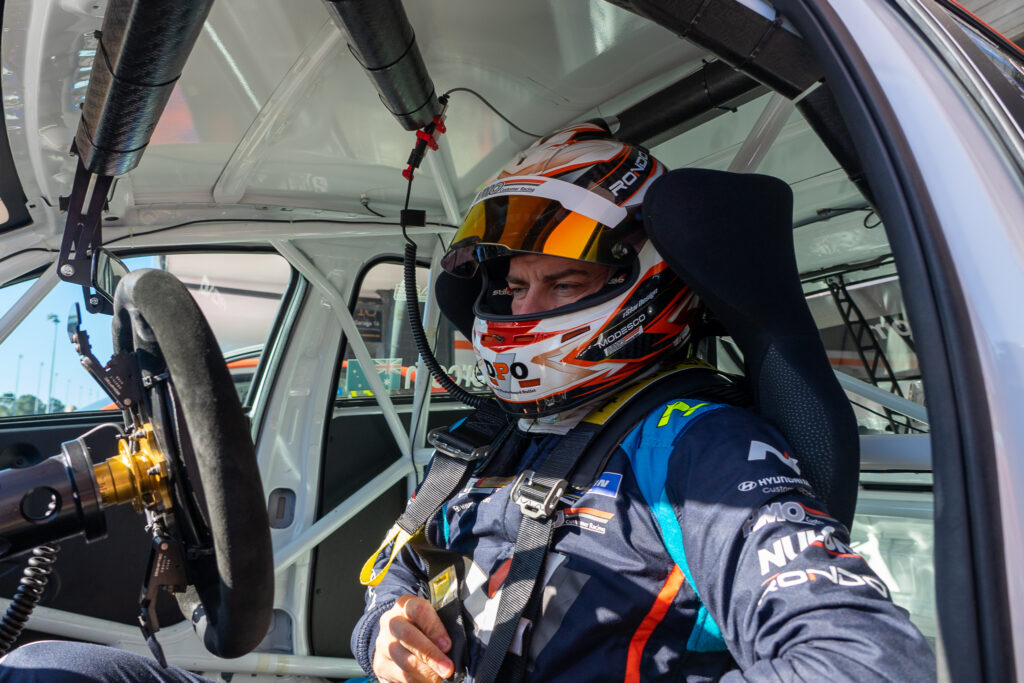Hyundai i30 N TCR
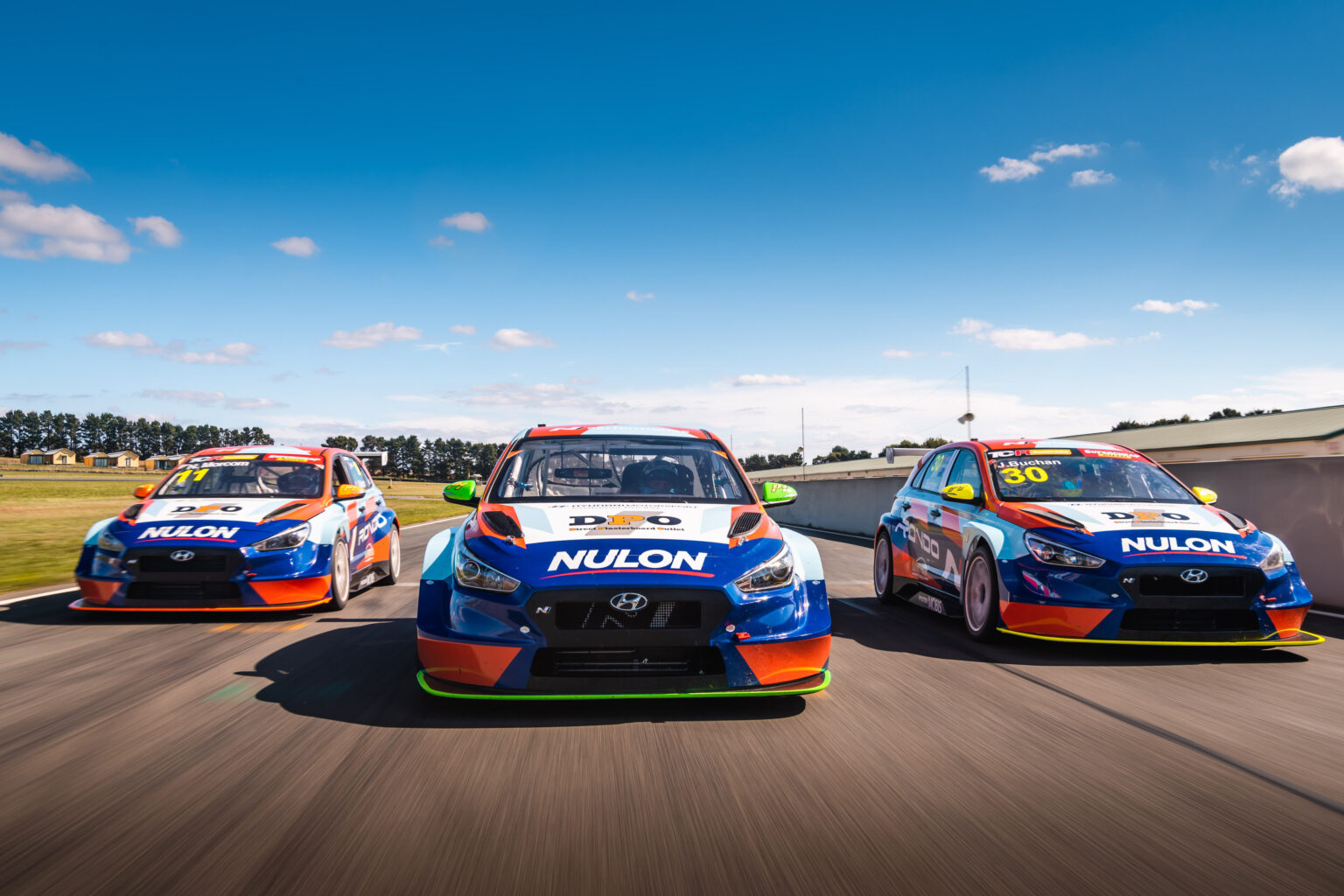
Hyundai i30 Sedan N TCR
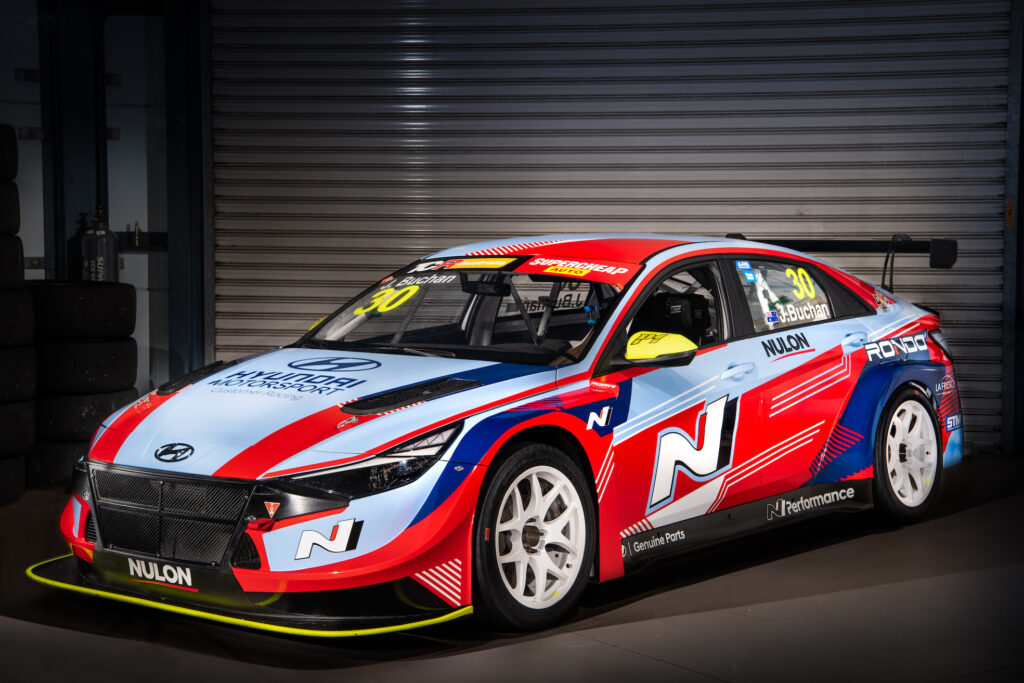
The Hyundai i30 Sedan N TCR (known as the Elantra N TCR in Europe and North America) is the latest generation touring car developed by Hyundai Motorsport’s Customer Racing division.
Revealed for the first time at the Beijing Motor Show in 2020 as a replacement for the successful i30 N TCR and Veloster N TCR models, it quickly established itself as a championship winner when Sebastien Loeb Racing won the 2021 TCR Europe title with Spanish driver Mikel Azcona.
Last year, Hyundai Motorsport clinched its third drivers’ title and second teams’ championship in the World Touring Car Cup (WTCR) with Azcona and BRC Hyundai Squadra Corsa, as well as a clean sweep of the TCR category in the North American IMSA Michelin Pilot Challenge with Bryan Herta Autosport claiming the drivers’, teams’ and manufacturers’ titles and a double title victory for Niels Langeveld and Target Competition in the ultra-competitive TCR Italy regional championship.
Based on the road-going i30 Sedan N, the TCR variant maintains strong links between the Hyundai Motorsport vehicles that racing fans see on track and the standard production cars they drive and in showrooms.
In line with TCR regulations, the i30 Sedan N TCR is front-wheel drive and powered by a 2.0-litre turbo charged four-cylinder engine built specifically by Hyundai Motorsport and directly related to the motor in the road-going i30 Sedan N.
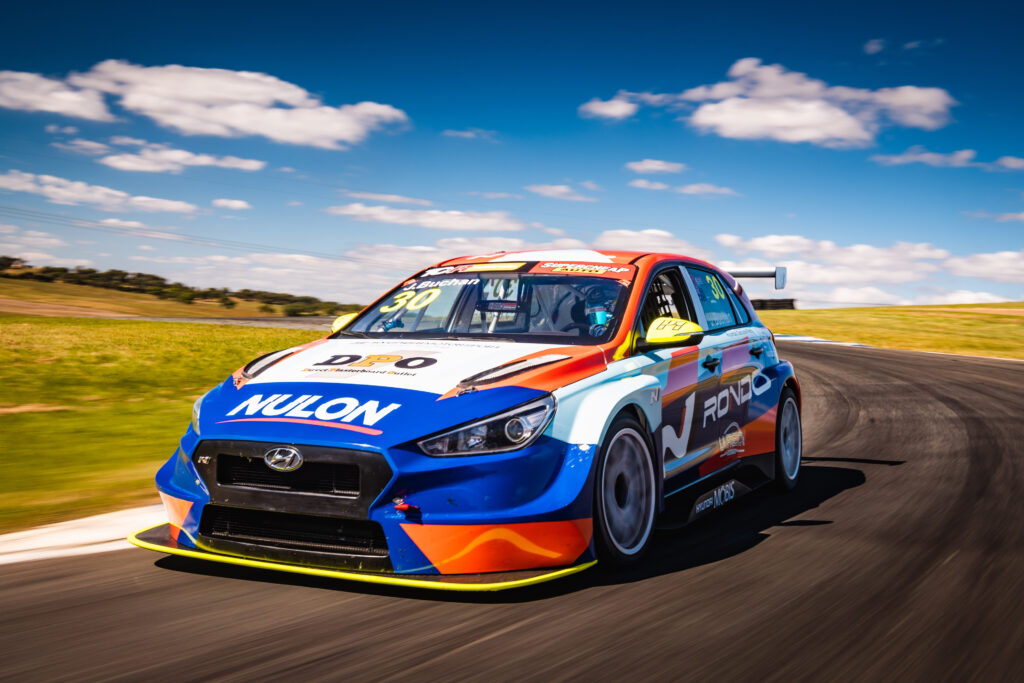
Chassis
The Touring Car Racing (TCR) regulations stipulate that all vehicles are based on a road-going production vehicle, either a four-door sedan or five-door hatchback with a front-wheel drive powertrain configuration and a turbo charged engine between 1.75-litres and 2.0-litres in capacity.
The i30 N TCR uses the same fundamental bodyshell as a showroom-specification Hyundai i30 N hatchback. But it has been specially modified by Hyundai Motorsport for motor racing with stronger welding and additional reinforcements to handle the stresses under racing conditions.
The wheel arches have also been modified and extended body work is fitted to meet the maximum width requirements and cater for the wider wheels and tyres.
The chassis is built around a high-strength roll cage that not only provides significant protection for the driver in the event of an accident but improves the structural rigidity of the chassis.
The minimum weight for the Hyundai i30 N TCR is 1265kg (including the driver) when using a racing gearbox.
Engine and Transmission
The i30 N TCR is powered by a special motorsport version of the same 2.0-litre turbo charged motor found in the road-going Hyundai i30 N hatchback, i30 Sedan N and the KONA N SUV.
The 1998cc force-fed four-cylinder uses the same fundamental wet sump engine block and 16-valve cylinder head as the road car but features an upgraded turbo charger, a larger intercooler and a handful of minor modifications to increase maximum power outputs to approximately 257kW and 420Nm.
That power is delivered to the front wheels via a pneumatically actuated six-speed manual gearbox developed by racing specialists X-Trac with a twin-plate clutch made from composite materials and a multi-plate limited slip differential with external pre-load adjustments.
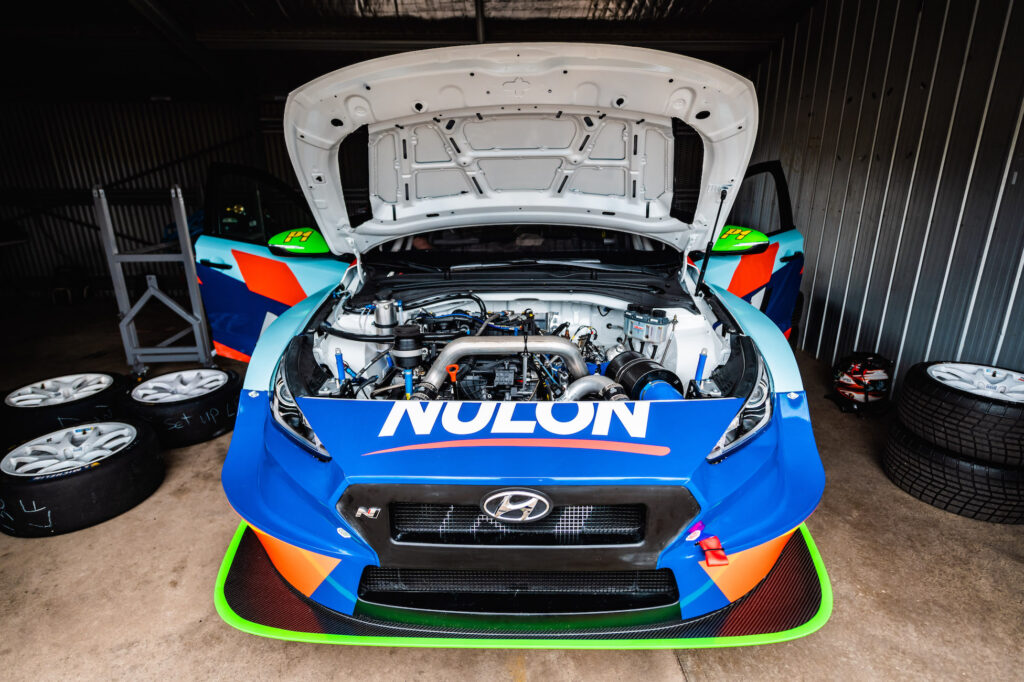
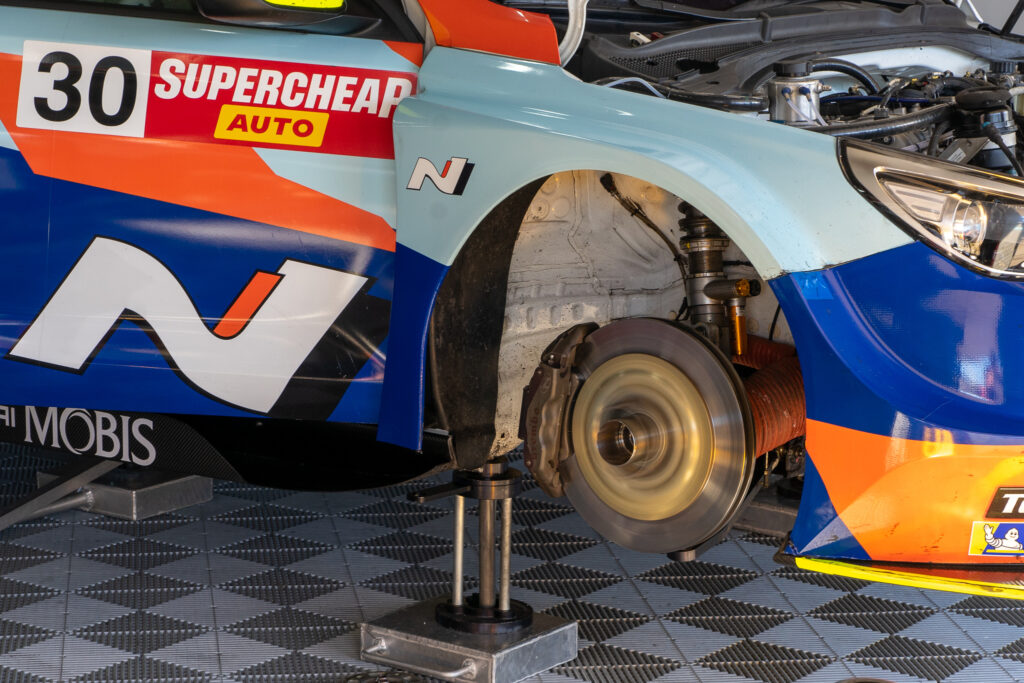
Brakes and Suspension
The TCR regulations require the race cars to retain the same suspension configuration as the production car.
Therefore, the Hyundai i30 N TCR has a fully independent set-up with McPherson struts, coil springs, dampers and an anti-roll bar at the front and a four-arm multi-link layout with coil springs, dampers and an anti-roll bar at the rear.
While the configuration is the same, the individual components are specifically designed for motor racing.
Similarly, TCR regulations allow the braking system to be upgraded from standard components. In the i30 N TCR, it uses high-performance AP Racing six-piston front calipers and larger 380mm ventilated steel discs at the front and twin-piston calipers on 278mm steel discs at the rear.
Wheels and Tyres
While the road-going Hyundai i30 N runs 19-inch wheels with specially-designed Pirelli P Zero HN tyres that are suitable for driving in all weather conditions, the i30 N TCR features lightweight 10”x18” Braid wheels with Michelin slick racing tyres.
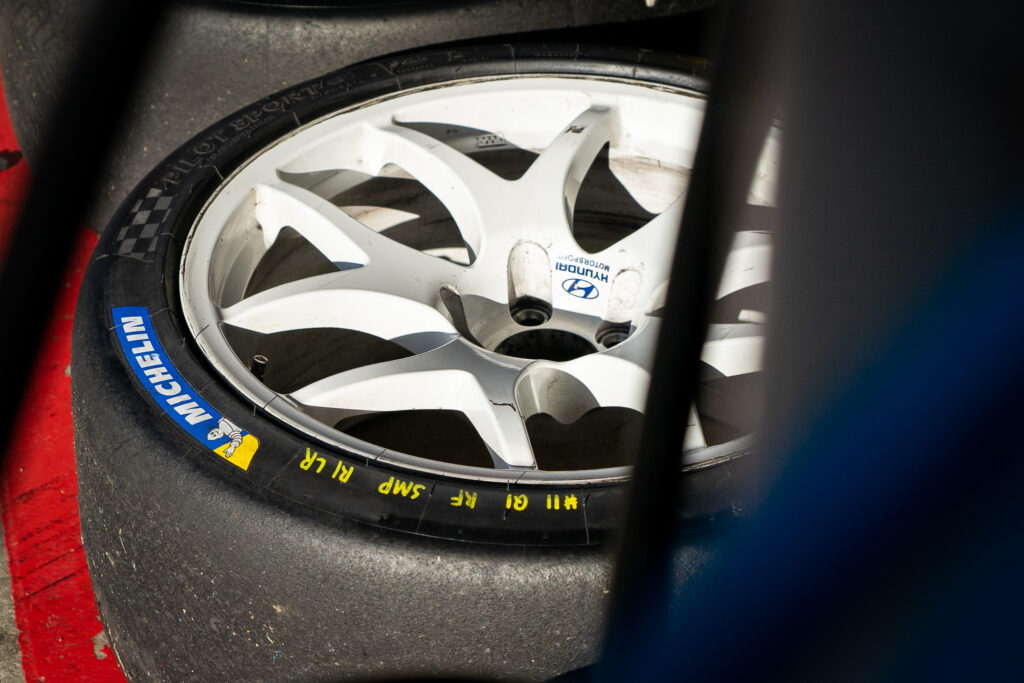
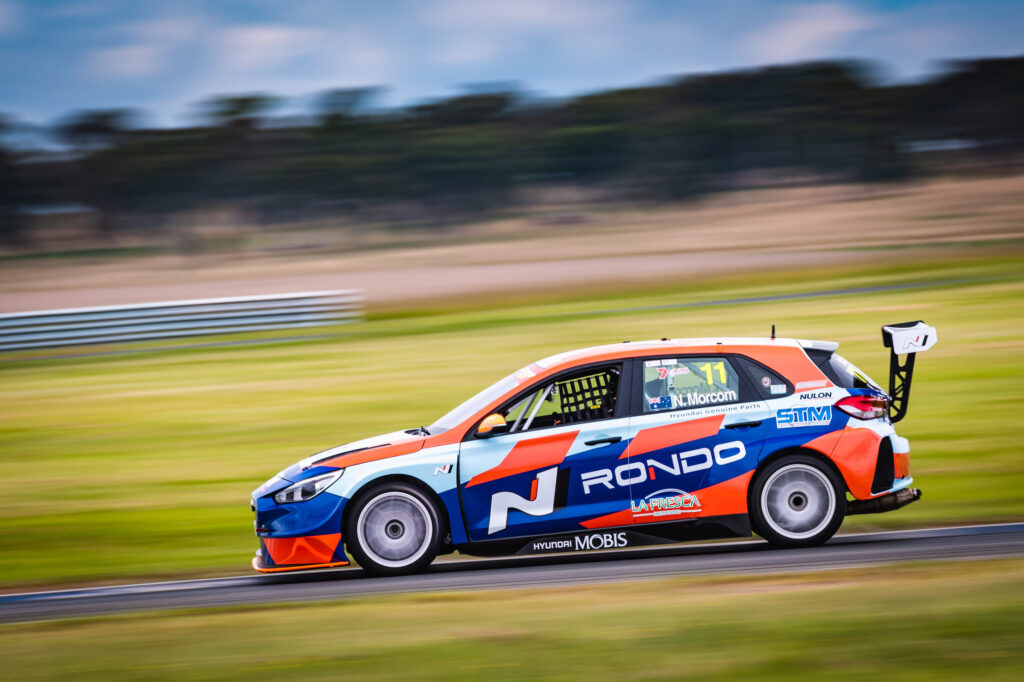
Aerodynamics
Downforce is a key factor in motor racing, and the Hyundai i30 N TCR features a host of unique body body parts that are specifically designed to help push the car into the racetrack at high speeds for extra grip.
At the front, there’s a large front splitter that extends from the lower lip of the bumper and right across to each end of the wider wheel arches to improve front-end grip.
Down each side, there are specially designed side skirts that improve the direction of airflow to reduce drag.
And, integrated into the rear hatch is a single-plane rear wing that can be adjusted to trim the car for more downforce on twisting circuits or lower drag for higher top speeds on faster circuits.
Cockpit and Safety
Driver protection is a fundamental part in any racing car, and Hyundai Motorsport has paid particular attention to this in the development of the i30 N TCR.
For starters, the bodyshell is strengthened and fitted with a comprehensive roll cage structure with side impact structures. The driver’s seating position is moved slightly further rearward and inboard towards the centreline compared to a standard Hyundai i30 N. This not only improves weight distribution for better handling but places the driver in the strongest part of the safety cell.
The driver’s seat is made from high strength carbon composite materials, they are secured by an FIA-approved six-point racing harness and further protected by an on-board fire suppression system.
The steering wheel is made specifically for racing and features an array of buttons and knobs to provide easy control for key functions during a race, such as radio communications, pit lane speed limiter, windscreen wipers and headlights.
The driver also uses buttons on the steering wheel to adjust the information displayed on digital dashboard mounted on top of the steering column.
